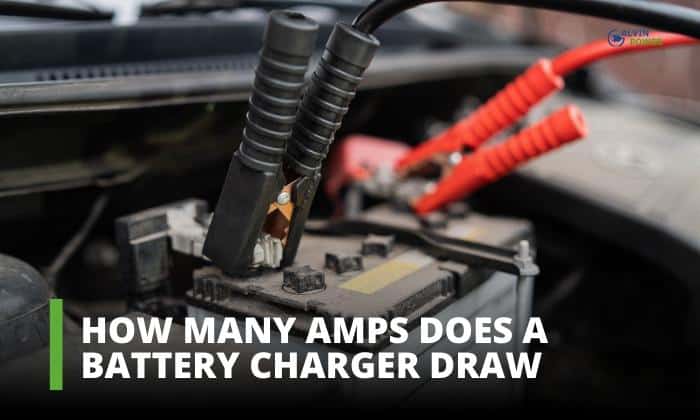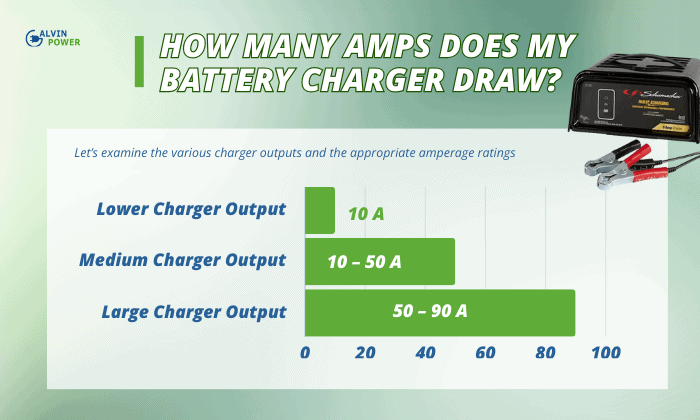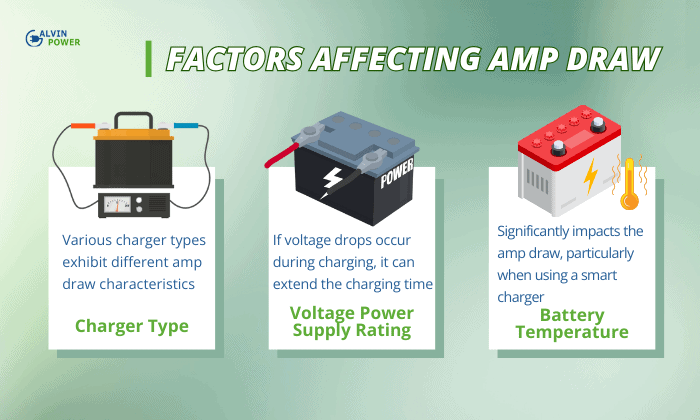The amperage of a battery charger is a crucial factor in the charging process, as it can affect the time required to reach a full charge. Typically, battery chargers offer varying charging rates, such as 2 amps, 10 amps, or even 30 amps or higher.
In this article, we’ll delve into the specifics of how many amps does a battery charger draw and which rating is the most suitable for charging your battery. For a deeper understanding, continue reading below.
Table of Contents
How Many Amps Does My Battery Charger Draw?
Knowing how many amps your battery charger draws is essential for efficient and safe charging. In general, 12 volt battery chargers come in various sizes, each with its own amperage rating. Its amperage draw is primarily determined by its power output.
Let’s examine the various charger outputs and the appropriate amperage ratings.
1. Lower Charger Output (10 amps)
Lower charger outputs have amp ratings of less than 10 amps, making them suited for smaller batteries like those found in motorcycles, lawnmowers, and small electronics.
Usually, these chargers provide a continuous and mild charge, making them ideal for preserving these battery types while preventing overcharging.
2. Medium Charger Output (10 – 50 amps)
Medium charger outputs range from 10 to 50 amps, allowing them to accommodate various battery sizes, including those found in vehicles, trucks, and boats.
These chargers strike a good compromise between charging speed and battery protection, making them a popular choice for daily charging.
3. Large Charger Output (50 – 90 amps)
Chargers with high output draw 50 amps or more and are intended for heavy-duty applications. They are useful in industrial applications where quick charging of big deep-cycle batteries is required.
However, extreme caution is required, especially when working with smaller batteries, because the higher amp draw can generate heat and potentially harm the battery if not closely monitored.
Factors Affecting Amp Draw
Here are some factors that might affect a charger’s amperage draw and charging rate.
1. Charger Type
Various charger types, including trickle chargers, smart chargers, and rapid chargers, exhibit different amp draw characteristics.
For instance, a trickle charger typically draws around 2 amps, prioritizing safety during charging, while some rapid chargers can draw more than 20 amps for faster charging.
2. Voltage Power Supply Rating
The voltage power source is another aspect that influences the amp draw of a battery charger. Normally, if voltage drops occur during charging, it can extend the charging time before fully charged.
However, depending on the voltage drop rating, it can potentially damage the battery charger. In this case, maintaining a consistent power source is critical for efficient charging and your charger’s longevity.
4. Battery Temperature
The battery’s temperature significantly impacts the amp draw of a battery charger, particularly when using a smart charger. It has an adaptive feature that improves the charging process’s safety and efficiency.
It prevents overheating by adjusting the battery’s temperature, which can pose significant hazards to battery health and safety.
On Quora, a username ATO Inc shares their experiences and insights about what can happen when your battery’s voltage drops during charging.
These real-world stories help us understand this important part of battery charging better.
Should I Charge My Battery at 2-Amp or 10-Amp?
When charging your battery, the decision between a 2-amp and a 10-amp rate depends on your specific requirements. Both options offer safe charging experiences with low charge ratings. However, car battery amps charging at a 10-amp charger provides a more robust charging rate compared to a 2-amp charger.
Therefore, if you seek a combination of safety and fast charging for your car battery, a 10-amp charger is a suitable choice. On the other hand, if your vehicle is infrequently used, opting for an inexpensive 2-amp battery charger can be a practical alternative.
Check out a detailed guide about chargers of various amps here:
Conclusion
Understanding how many amps does a battery charger draw is critical for effective and safe battery charging.
It is important to remember that even with a low-amp charger, there’s still a chance of overcharging your battery. As a result, knowing your charger rating and the battery capacity will inform you of the battery charge time.
By taking these aspects into account, you can ensure that your battery charging is efficient and safe, thereby extending the life and performance of your batteries.

I am Andrew Wright. With 8 years of experience designing, installing, and maintaining electrical power systems. I love my job, and I have always wanted to offer others the necessary help so they can take care of their houses.



